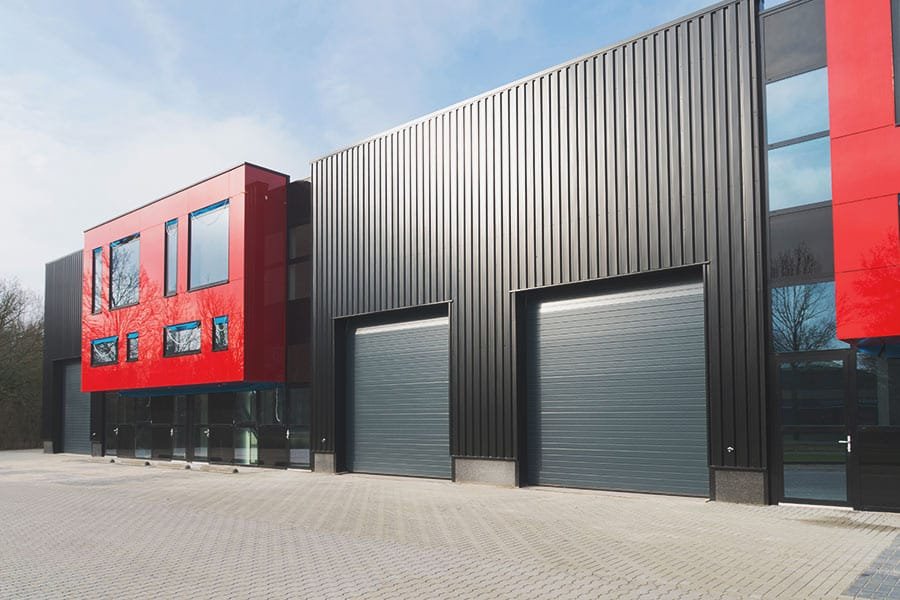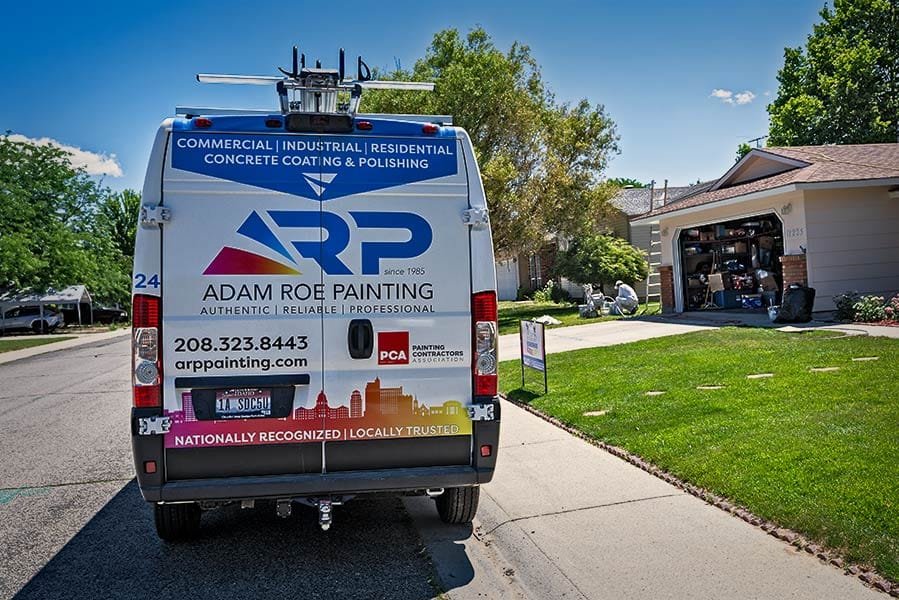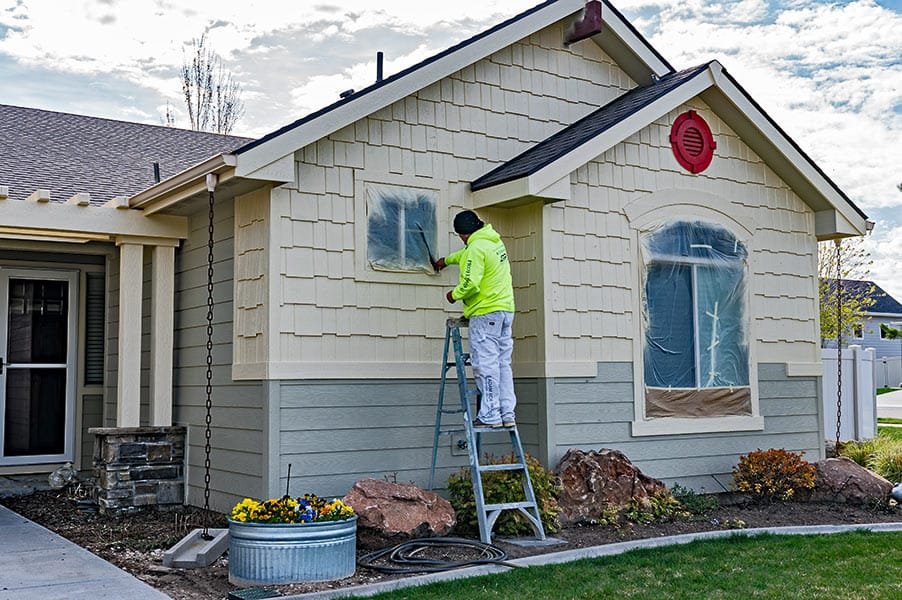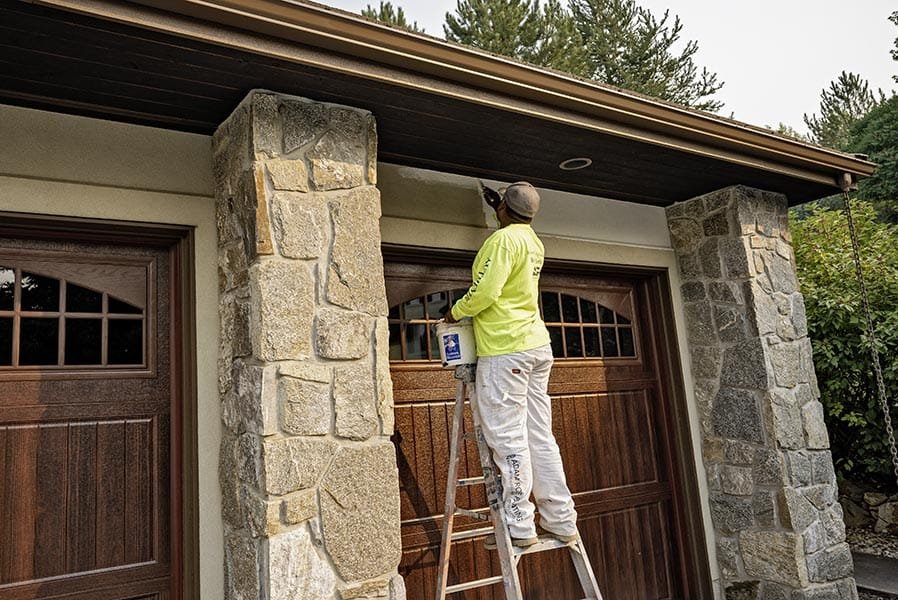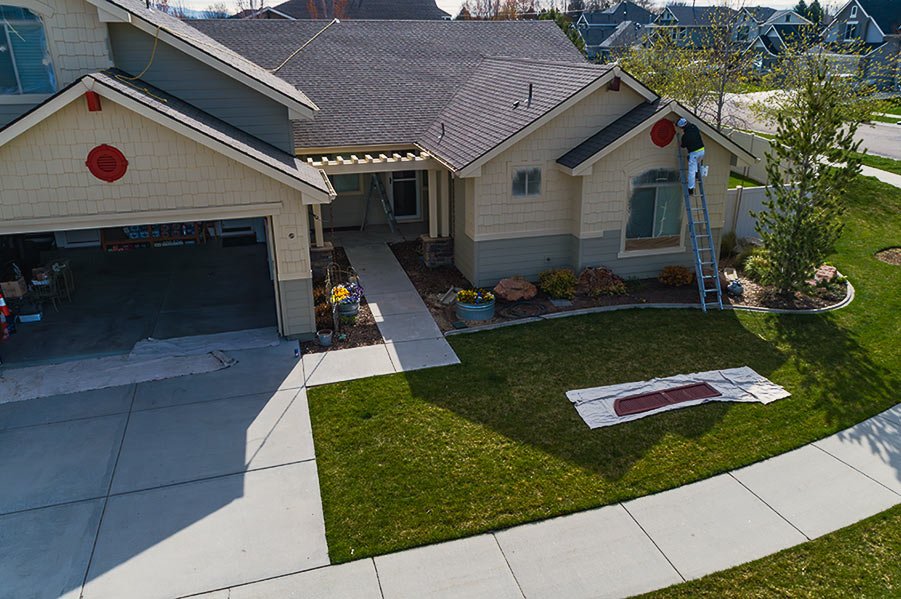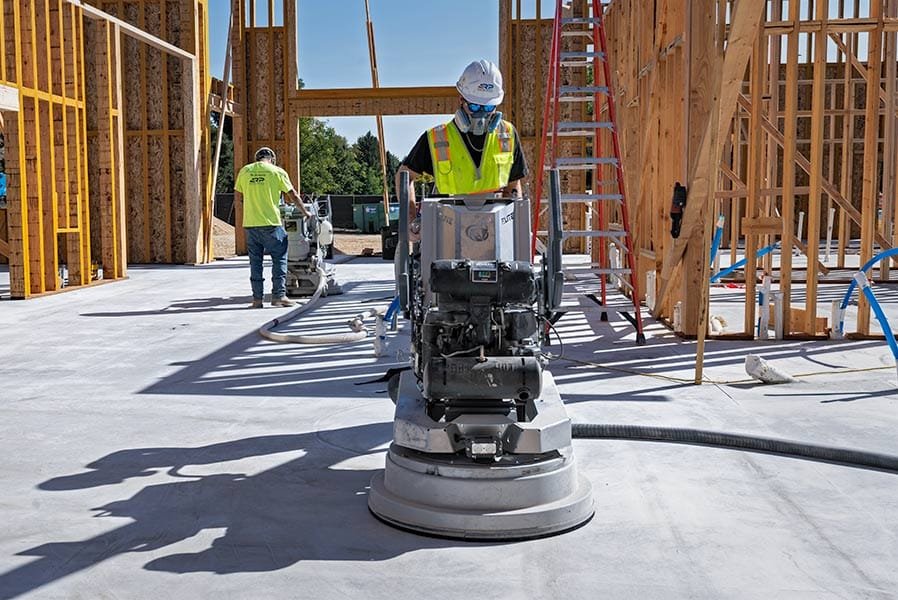Spring is known for its mild temperatures, typically ranging between 50-85°F. Conditions such as these are perfect for most exterior paint types to cure properly without the risk of extreme heat or freezing temps that can affect the results.
During spring, humidity is generally moderate, ensuring that the paint adheres well to your home’s surface and dries evenly. Excessive humidity in summer can cause paint to dry too slowly, leading to streaks and imperfections, which can be avoided with a spring exterior repaint.
High temperatures in summer can cause paint to dry unevenly or too quickly, leading to peeling and cracks. A spring exterior repaint avoids these issues, offering a smooth and long-lasting finish.
By understanding these visible symptoms, you’ll be able to act quickly to mitigate further damage and maintain the professional image of your commercial property.
Nothing revitalizes your home’s appearance as much as a fresh coat of paint. A spring exterior repaint can help your property stand out, look modern, and increase its market value.
If your current paint is faded, peeling, or outdated, spring is the perfect time to bring new life to your home’s exterior. A spring exterior repaint provides an opportunity to modernize your home, increase its curb appeal, and make a lasting impression.
The color you choose for your spring exterior repaint plays a pivotal role in determining how your home looks and feels. As you consider your palette, think about these trending tones for 2025:
Recent studies show the connection between fresh paint and a home’s value. Homes with updated, neutral exterior colors sell for 3-5% more than homes with outdated or worn paint. A spring exterior repaint can ensure that your property stands out to potential buyers.
When planning your spring exterior repaint, it’s important to consider your home’s architecture and surrounding trends. For instance:
A spring exterior repaint is more than just a cosmetic upgrade—it’s an essential step in safeguarding your property against nature’s wear and tear.
Spring rains are notorious for causing issues like mold, mildew, and wood rot, especially if your home’s current paint is cracked or peeling. A fresh coat of high-quality paint acts as a weather-resistant barrier, reducing the risk of water seeping into your home and causing damage.
Exposed wood areas from chipped paint can attract termites and other insects. A fresh coat seals surfaces, protecting your home from these unwelcome pests.
A lesser-known advantage of a spring exterior repaint is its role in optimizing energy efficiency.
Lighter exterior paints reflect sunlight, helping to keep your home cooler during the warmer months. This can lower your need for as much air conditioning and reduce your energy bills by 10-15%.
A fresh repaint also seals small cracks or gaps in your exterior, reducing air leaks that can strain your heating and cooling systems. A spring exterior repaint serves as an added layer of insulation that will help regulate your indoor temperature year-round.
Over time, homes with reflective paint and energy-efficient coatings enjoy reduced cooling/heating costs while lowering future maintenance needs, making a spring exterior repaint both eco-friendly and budget-conscious.
When you consider the favorable weather, aesthetic benefits, protection against damage, and energy savings, it’s clear why a spring exterior repaint is a great way to enhance your home.
